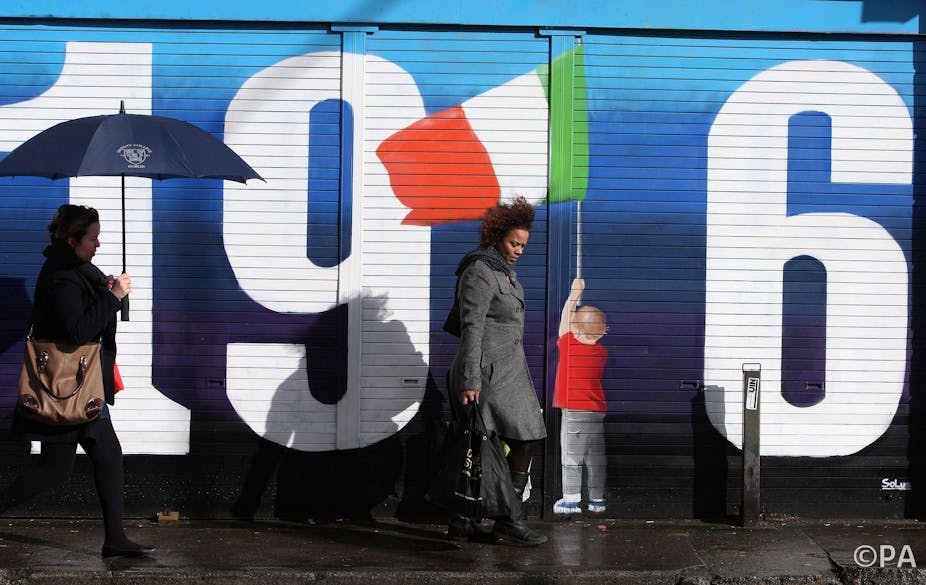The Easter Rising of April 1916 did not just lay the foundations for Irish independence. It was an event of importance across the world. Arguably it helped usher in an era of struggles for independence, as well as laying down a milestone in social and gender equality that had similarly far-reaching effects.
When Irish Volunteer Patrick Pearse loudly declared independence outside the Dublin General Post Office on April 24 1916 as one of leaders of over 1,700 insurrectionists, it was an attack on the heart of the British Empire. This was a time when it was already under pressure on the back of the Boer War and World War I.
Though the rising was thwarted five days later and Irish independence would not happen until 1923, many believe that the actions that began that Easter Monday helped inspire similar rebellions in more distant parts of the British Empire. Not least it encouraged nationalists in India, even if they rejected the road of armed resistance. It was not long until the Amritsar massacre of 1919 that helped pave the way to Indian independence several decades later.
Arguably the events in Dublin inspired other revolutionaries too, notably the Russian bolsheviks. One of the ringleaders of the Easter Rising was James Connolly, who led the socialist Irish Citizen Army, which contributed some 200 men. Both Lenin and Trotsky responded sympathetically to Connolly’s melding of Marxism and nationalism, playing up the significance of the rising and the mutual benefits of the nationalist, women’s and workers’ struggle – a point still highly relevant today.

It is often overlooked that both Connolly and the Russian Marxists were inspired by the Paris Commune of 1871, in which 20,000 insurrectionists were killed by French loyalist troops. An early account of the Easter Rising compared the two events, pointing out that street fighting on such a scale in a European city was rare.
It is also worth mentioning Edinburgh-born Connolly’s connection to Scottish socialist John Maclean and Red Clydeside. As Maclean later said:
I was arrested and taken to Edinburgh castle as a prisoner of war [for being a communist], was bailed out, and was sentenced to penal servitude for three years at Edinburgh high court on Apri1 12 1916. When Jim Connolly saw how things were going in Edinburgh he resolved on the Easter rebellion in Dublin, the beginning of Ireland’s new fight for freedom, a fight that can only end in an Irish workers’ republic based on communism.
People from Scotland and elsewhere travelled to Dublin to take part in the rising. Red Clydeside then had its own insurrectionist moment in the battle for Glasgow’s George Square of 1919.
Equality struggle
Patrick Pearse’s proclamation of the Irish republic, which was partly based on Robert Emmet’s proclamation of Irish independence of 1803, enshrined equal suffrage and equal rights. It spoke of “religious and civil liberty, equal rights and equal opportunities to all its citizens” and “cherishing all children of the nation equally”.

Women’s suffrage had already been gaining ground elsewhere. Adult women had gained the right to vote in New Zealand in 1893 and South Australia in 1894, which also extended them the right to stand for parliament. Yet by the time of the Easter Rising, most jurisdictions had not followed suit. The fact that equal suffrage and revolution seemed bound up together in Ireland undoubtedly helped further the international cause. By the time women received the vote when the Irish Free State was established in 1923, it had been extended by Moscow in the declaration by the provisional government of Russia of March 1917 and also in Canada and the United States in 1920.
It would take until 1928 in the UK, 1944 in France and 1945 in Italy.
Easter 1916 was also a fight against social inequality. Connolly told his Irish Citizen Army to hold on to their weapons when the battle seemed to be over, as they were fighting for a different Ireland from the purely nationalist Irish Volunteers. Connolly’s advice to his comrades was perhaps on the assumption that if the rising succeeded, they would have to be prepared to challenge their more conservative allies. Following the war of independence between the British and Irish (1919-21), these divisions led to a bloody civil war in 1922-23. People then held on to their guns for many years to come.

The divided legacy
Opinion still divides on what the rising produced. Take the French connection. While some historians emphasise the parallels with the Paris Commune, others argue that the Irish Free State had more in common with Catholic conservatism than radical republicanism. This rings true, particularly if we fast-forward to the Spanish Civil War and reflect on the fact that most Irish people supported fascist Franco. Then again, there were Irish Volunteers fighting against Franco’s side who were named the Connolly Column in honour of their fallen leader, which shows that the socialist tradition played its part there too.
This illustrates that 1916 had a divided legacy. Connolly wrote a pamphlet in 1908, Socialism in Ireland, which insisted on the possibility of a socialist future, despite claims that the country was too economically backward and the clergy too conservative to permit such an outcome. But Connolly’s vision depended on independence for a united Ireland. The “carnival of reaction” that he predicted would result from partition of the north and south would postpone that vision and prolong the road to socialism. Neither the free state, nor later the free market, could fulfil the socialist vision.
Neither did it live up to what Pearse envisaged – an Ireland that would be Gaelic, independent, republican and united. Which, if any, of the leaders of the rising would recognise the state of independence that they fought for today? When we mark the centenary in the coming weeks, that is not a question that should be dismissed lightly.

